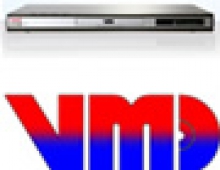
EVD: The Asian answer to royalty fees
Separate consortia in Taiwan and China are pecking away at a new DVD format that would enable disc and player manufacturers to evade royalty payments to Japanese, American and European companies, which now have a lock on the technology.
More than a year ago, China said it was developing a format called Advanced Versatile Disc (AVD) that would be used only in the Greater China region, including Taiwan, Hong Kong and Macau. Some considered it bluster, a ploy by Chinese manufacturers to strike a better deal on royalty payments to the DVD Forum. But the establishment of a Taiwanese consortium now adds greater substance to the threat.
After several months of exploring the feasibility of AVD, 19 Taiwanese companies quietly came together in April 2002 to start work on a next-generation standard that would not use the format specified by the DVD Forum as a base- line technology.
The Taiwan standard is being called Enhanced Versatile Disc (EVD) and is basically compatible with China’s AVD. The capacity potential is about 1 Byte higher than that of today’s single-sided, one- and two-layer DVDs. Current red-laser technology will be implemented.
The consensus here is that with the help of Taiwan, China will attempt to repeat an earlier effort in which it developed Super Video CD (SVCD) as a foil to the Video CD format, allowing manufacturers to duck royalty payments to Philips, JVC, Sony and Matsushita.
Although China represents a small share of DVD player sales, it is growing in prominence.
Increasing pressure to pay royalties, combined with falling DVD player prices, has intensified efforts to develop China’s own standard.
The DVD6C licensing group, composed of Hitachi, Matsushita, Mitsubishi, Toshiba, JVC and AOL Time Warner, earlier this month laid out a plan to woo domestic Chinese manufacturers to the group’s royalty scheme of up to $4 per unit. The 6C group offered royalty-free sales through Dec. 31 of last year to units built for the domestic Chinese market. The waiver is available only to manufacturers that sign a license before June 30, 2002. There is still no word on whether Chinese manufacturers will buy into the plan.
Separately, the so-called 3C group — consisting of Philips, Sony and Pioneer — is also demanding that Chinese manufacturers begin paying royalties on DVD players. Any party that makes, uses, imports or sells products covered by the licensed patents is expected to contact both the 6C and 3C groups and pay them separate fees. Furthermore, because the DVD format uses the MPEG-2 video standard, another separate royalty must be paid to MPEG LA, the MPEG licensing authority.
All the assorted payments add up to $15 to $20 per unit. Besides MPEG, 6C and 3C, they include payments for Dolby sound and to owners of various copy protection systems. Most Chinese manufacturers have refused to pay, just as they refused to pay Video CD royalties.
Though details are still sketchy, many industry sources suggested that the new format will offer the Chinese domestic market high-resolution video — some say high definition (HD), others say full D1 video using red-laser technology — in time for the 2008 Olympics in China.
Several industry sources confirmed that emerging EVD or AVD players will be capable of playing back both EVD / AVD discs and DVD discs. Given that DVD is already a huge success on the global market, an attempt to develop a new format player that does not play DVD discs is suicidal.
The next question is whether DVD-format license holders can go after Chinese OEMs for royalties on products labeled as EVD or AVD players. The question here is whether a proprietary product that plays both EVD/ AVD and DVD discs can be considered, technically, not a DVD player. The distinction is crucial to many that hold essential DVD-format patents.
After several months of exploring the feasibility of AVD, 19 Taiwanese companies quietly came together in April 2002 to start work on a next-generation standard that would not use the format specified by the DVD Forum as a base- line technology.
The Taiwan standard is being called Enhanced Versatile Disc (EVD) and is basically compatible with China’s AVD. The capacity potential is about 1 Byte higher than that of today’s single-sided, one- and two-layer DVDs. Current red-laser technology will be implemented.
The consensus here is that with the help of Taiwan, China will attempt to repeat an earlier effort in which it developed Super Video CD (SVCD) as a foil to the Video CD format, allowing manufacturers to duck royalty payments to Philips, JVC, Sony and Matsushita.
Although China represents a small share of DVD player sales, it is growing in prominence.
Increasing pressure to pay royalties, combined with falling DVD player prices, has intensified efforts to develop China’s own standard.
The DVD6C licensing group, composed of Hitachi, Matsushita, Mitsubishi, Toshiba, JVC and AOL Time Warner, earlier this month laid out a plan to woo domestic Chinese manufacturers to the group’s royalty scheme of up to $4 per unit. The 6C group offered royalty-free sales through Dec. 31 of last year to units built for the domestic Chinese market. The waiver is available only to manufacturers that sign a license before June 30, 2002. There is still no word on whether Chinese manufacturers will buy into the plan.
Separately, the so-called 3C group — consisting of Philips, Sony and Pioneer — is also demanding that Chinese manufacturers begin paying royalties on DVD players. Any party that makes, uses, imports or sells products covered by the licensed patents is expected to contact both the 6C and 3C groups and pay them separate fees. Furthermore, because the DVD format uses the MPEG-2 video standard, another separate royalty must be paid to MPEG LA, the MPEG licensing authority.
All the assorted payments add up to $15 to $20 per unit. Besides MPEG, 6C and 3C, they include payments for Dolby sound and to owners of various copy protection systems. Most Chinese manufacturers have refused to pay, just as they refused to pay Video CD royalties.
Though details are still sketchy, many industry sources suggested that the new format will offer the Chinese domestic market high-resolution video — some say high definition (HD), others say full D1 video using red-laser technology — in time for the 2008 Olympics in China.
Several industry sources confirmed that emerging EVD or AVD players will be capable of playing back both EVD / AVD discs and DVD discs. Given that DVD is already a huge success on the global market, an attempt to develop a new format player that does not play DVD discs is suicidal.
The next question is whether DVD-format license holders can go after Chinese OEMs for royalties on products labeled as EVD or AVD players. The question here is whether a proprietary product that plays both EVD/ AVD and DVD discs can be considered, technically, not a DVD player. The distinction is crucial to many that hold essential DVD-format patents.




















